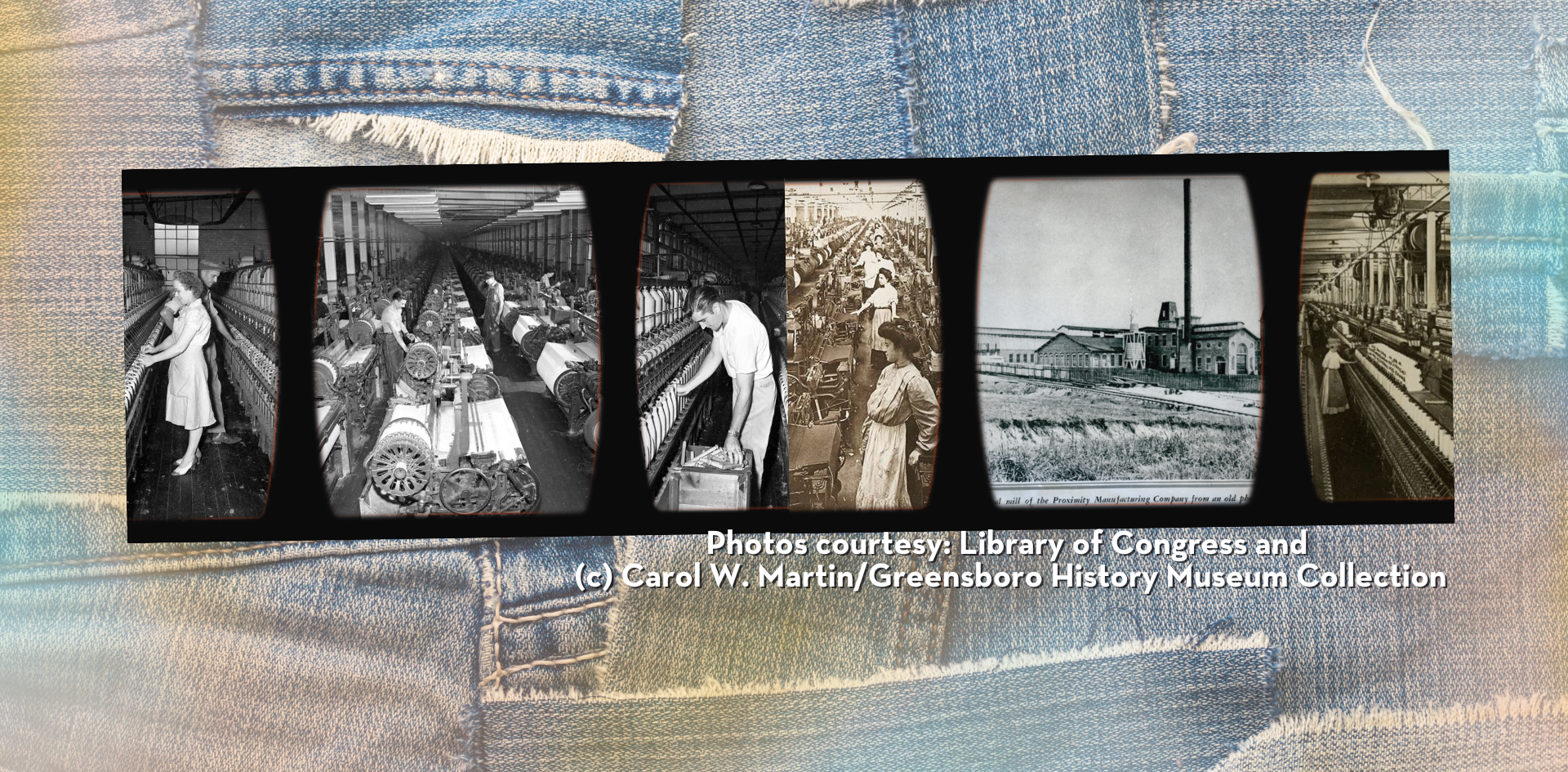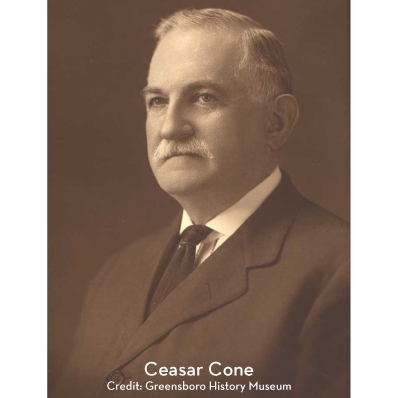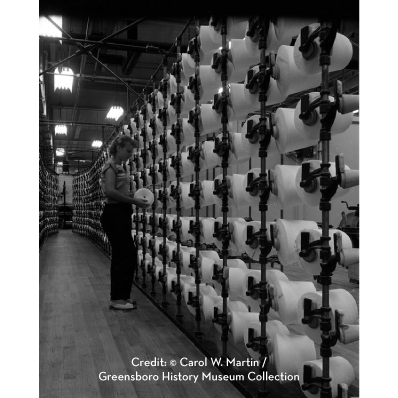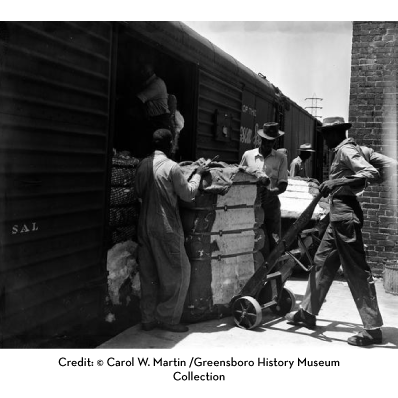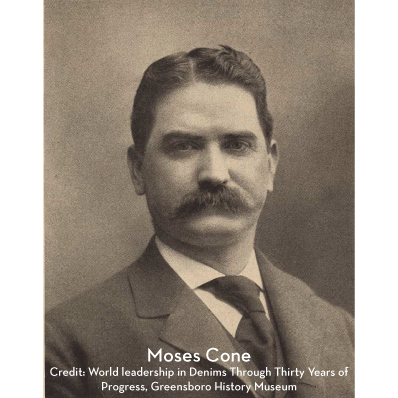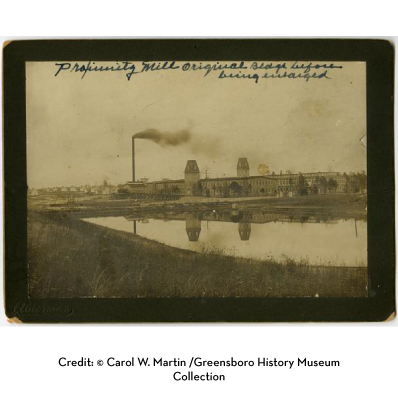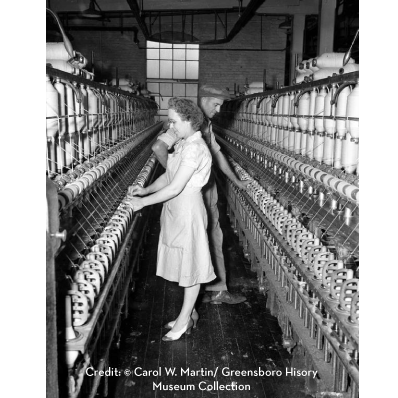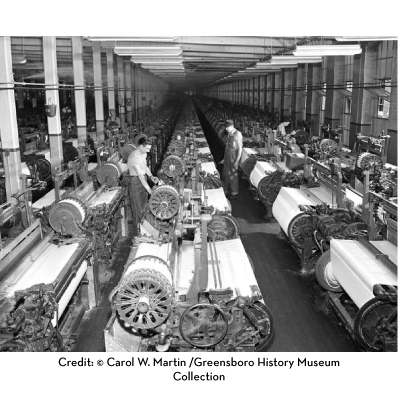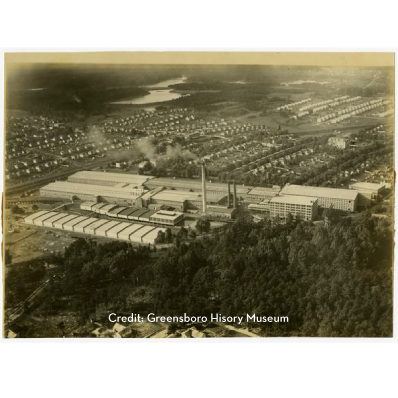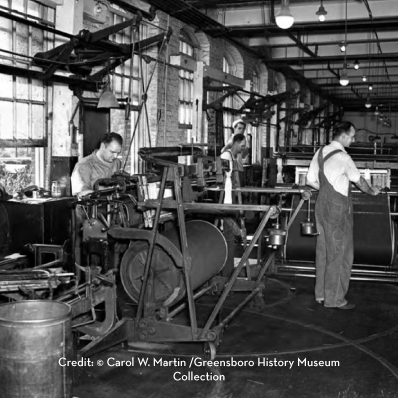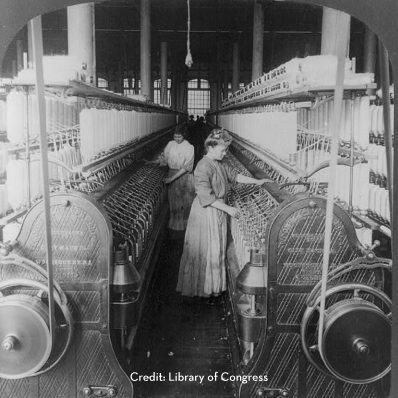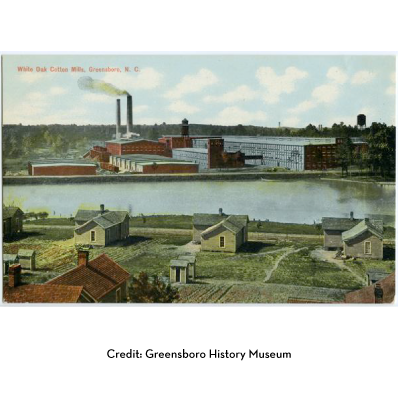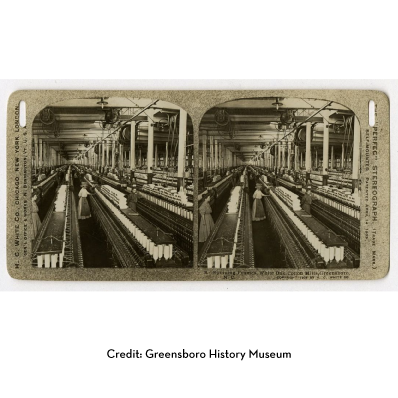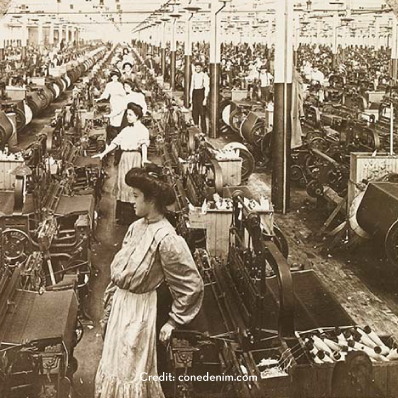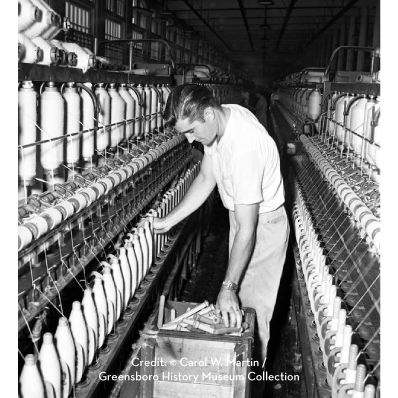Blue once ruled the Green(sboro).
Known as Tournament Town and the Gate City, Greensboro also goes by Jeansboro as a nod to the city's roots as the former denim capital of the world.
Greensboro's denim legacy dates back to the late 1800s when Moses and Ceasar Cone founded Cone Mills, which became the largest supplier of denim to brands including Levi’s. Greensboro’s dedication to quality craftsmanship transformed it into a hub for textile innovation, making the city synonymous with durable, stylish denim that became a staple worldwide.
Today, Greensboro’s denim heritage inspires new generations of creators. Local artisans and entrepreneurs have revived the city's textile traditions, blending time-honored techniques with modern innovation. From serving as home to the Wrangler and Lee brands to craft denim brands and museums preserving the city’s rich history, Greensboro’s denim story is far from over.
The city's denim heritage thrives in Greensboro's food, attractions, and hotels.
Blue Denim celebrates the food and culture of the South, featuring Southern, Cajun, and Creole options in the heart of Downtown Greensboro. The restaurant focuses on locally grown and raised food.
Print Works Bistro is located at the Proximity Hotel. Named in honor of the historic Proximity Print Works Mill, which began construction in 1913 and remained in operation until 1977. The Proximity Print Works Mill, also known as the Cone Finishing Mill, was the first textile printer in the South.
The first flannel mill in the South, Revolution Mill opened in 1898 and operated for nearly a century. Today, Revolution Mill includes more than 100 businesses, meeting and conference facilities, apartments, outdoor performance spaces, public art galleries, restaurants and coffee shops, greenway trails, and more!
American Legion Cone Post 386 uses a 100-year-old chili recipe that originated from the White Oak Company Store. The sales are held at the Legion from the first Saturday after Labor Day until the last Saturday in April.
That recipe also tops hot dogs at the Hot Dog Church, aka Carraway United Methodist Church. Many of the Legion's members attended Carraway, so the church began holding hot dog sales during the summer, from the first Saturday in May until Labor Day.
You can learn more about the Hot Dog Church and that chili recipe in this video from PBS NC Weekend.
If you're in the mood for a great beer with a side of denim history, check out Joymongers Brewing Co. Joymongers wanted to celebrate Greensboro's textile history, specifically blue jeans, in their taproom. Wrangler provided custom denim with the Joymongers logo to use on the sound baffles hung from their ceiling and to cover their band wall where local musicians perform. Joymongers also has some historic Wrangler ads reproduced on their back hall walls.
The new era of textiles in Greensboro is on full display at Hudson's Hill. The company focuses on men’s and women’s denim, overalls, custom leather goods, and accessories all made in the USA.
During your visit to Hudson Hill's downtown Greensboro Store, you'll find artifacts highlighting the city's textile history.
In addition to its dining scene, Revolution Mill is home to shopping, entertainment, galleries, and performance spaces.
You can't tell the story of Greensboro's history without denim. The Greensboro History Museum hosts a permanent exhibit called "Voices of a City: Denim Capital." The exhibit features photos, timelines, and equipment from Jeansboro's heyday.
While much of the denim manufacturing has left Greensboro, the city is still home to the Lee and Wrangler brands, owned by lifestyle apparel company, Kontoor Brands. The Lee & Wrangler Hometown Studio is open on the south end of downtown Greensboro and boasts items you can't find anywhere else.
East White Oak Community Center
East White Oak was established as a village for African American employees of Cone Mills with three community spaces, two churches and a school. The school opened in 1916 to educate the children of those Cone Mills employees. It is now known as the East White Oak Community Center. The center is on the National Register of Historic Places.
Today, the center is available for rentals, offers tours, and continues its legacy of cultural, community, youth, and historic outreach. One feature is an interactive Civil Rights room commemorating David Richmond, one of the A&T Four and an East White Oak native, who helped launch the February 1, 1960 sit-in at the Greensboro Woolworth's store (now the International Civil Rights Center and Museum) which helped launch the modern-day Civil Rights Movement.
Cone Denim Entertainment Center
Cone Denim Entertainment Center is an intimate live music venue in downtown Greensboro. Originally known as the Imperial Theater, this venue was built in the early 1900s and was designed to be a movie house. It underwent a major renovation and reopened with the denim magnates' moniker in 2014.
Hotel Denim is a boutique hotel in midtown Greensboro. Besides its name, Hotel Denim pays tribute to Cone Mills through its denim-inspired décor, locally-made amenities, and murals celebrating Greensboro’s denim heroes.
The Grandover Resort & Spa, A Wyndham Grand Hotel, is an AAA four-diamond resort with a spa and two championship golf courses. The resort displays an original Cone Denim textile machine. The 100-year-old Draper loom is from the White Oak manufacturing plant, which closed at the end of 2017. The loom sits on a square of the Greensboro plant’s original wood flooring.
The Proximity Hotel is the first LEED Certified Hotel in the United States (it's green!). Proximity Hotel and its restaurant, Print Works Bistro, are named for two cotton mills in Greensboro that were part of Cone Mills.
The Biltmore Greensboro Hotel once housed the offices of Caesar and Moses Cone, who built the Proximity Manufacturing Mill, Revolution Cotton Mill, and the White Oak Plant. In 1903, they opened 111 W. Washington Street as their new headquarters. The building became “the first building in downtown that was completely wired with electricity and fastened with indoor plumbing.”
The hotel took its name in the early 1990s after new owners renovated and chose the name "Biltmore" for the high standards it represents. Rumor has it that the name comes from the famed Gloria Vanderbilt, who stayed there while in Greensboro for her line of jeans with the Cone brothers.
The Cone Health system began in 1911 as a trust established by Bertha Lindau Cone and is now one of the largest healthcare systems in North Carolina.
Bertha Cone created the trust fund to build a hospital as a memorial to her husband Moses Cone. The trust fund stated, "No patient should be refused admittance because of inability to pay." Following her death in 1947, Bertha's share of the family inheritance went to establishing The Moses H. Cone Memorial Hospital, which opened in February 1953.
Cone Health now spans more than 100 locations, including five hospitals, seven urgent care centers, and more than 120 physician practices, employing more than 11,000 people.
According to hospital documents, if the hospital's name changes to anything other than "The Moses H. Cone Memorial Hospital, Incorporated," or "The Moses H. Cone Memorial Hospital," the land will revert one-half of its ownership to Ceasar Cone, his heirs or assigns and the other half to the heirs of Moses H. Cone, or their assigns.
Watch the Jeansboro Segment from PBS-NC!
Jeansboro Statue Locations
*If you know of any locations missing from the map, please email us the address and a picture to marketing@visitgreensboronc.com

